The mission succeeded: a care centre for detainees that meets safety requirements and a nitrogen emission rate below the standard on site. The temporary care centre on the grounds of the Haaglanden penitentiary in Scheveningen was completed on 8 May. This achievement was made possible by the dpcp consortium, a collaboration between Du Prie Bouw & Ontwikkeling and cepezedprojects.
Lush greenery all around. The care centre for inmates is a stone's throw from the Natura 2000 area Meijendel & Berkheide, which has the status of a "protected nature monument". The Rijksvastgoedbedrijf deliberately chose to build here with low nitrogen, although this was not required at the time.
electric crawler crane
To minimise nitrogen emissions during construction, the process on the construction site was the main focus. For instance, we weighed up which (construction) materials were needed and calculated how much transport would be needed on the building site. 'The design of the care facility was adapted to this. It was also decided to build modularly on the building site,' says director Martijn du Prie. Du Prie is the contractor responsible for designing the facilities and building the temporary care facility. Cepezedprojects was responsible for project and process management.
For modular construction on site, the maximum size of a unit had to be calculated in advance in order to place the units on site with construction cranes. Du Prie: 'The construction site was small, so we could not use all types of construction cranes. We chose an electric crawler crane that can lift the heaviest elements. This crane also has the advantage that it can reach the furthest corners.'
In practice, there were quite a few challenges to tackle for minimal nitrogen precipitation during construction. The starting point was that everything on the construction site needed to be electric, but that was not always possible. Du Prie: 'The electric crawler crane broke down once. We had to resort to a diesel crane in order to repair it. And a diesel pump - with filters - was needed to pour the screed. These are unexpected issues during the construction project, which affect the total nitrogen emissions.
nitrogen reduced building: market pioneers with Rijksvastgoedbedrijf
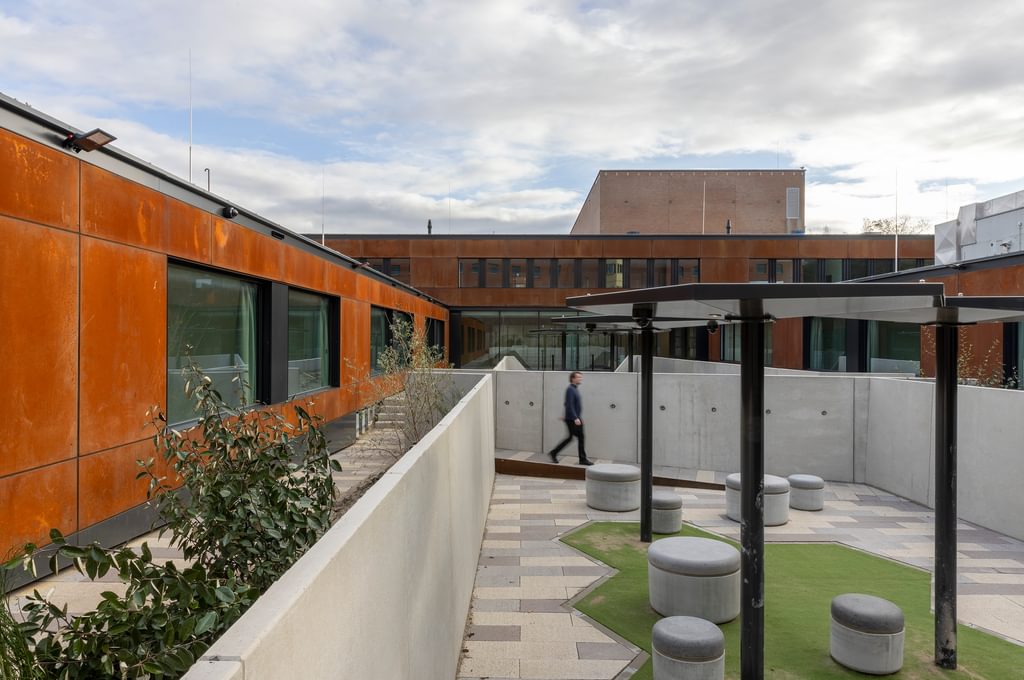
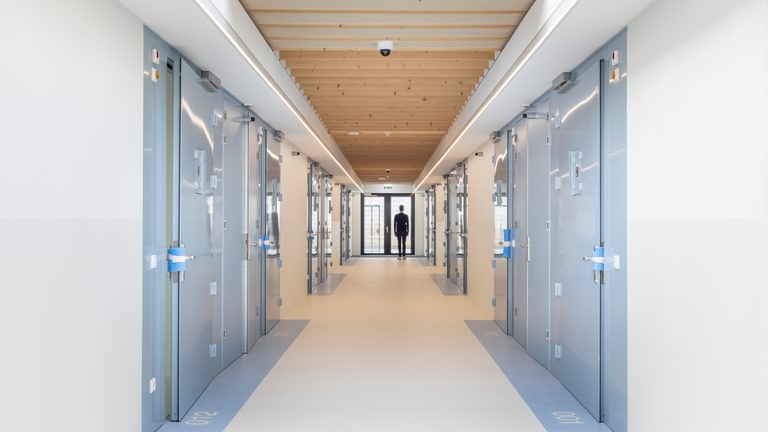
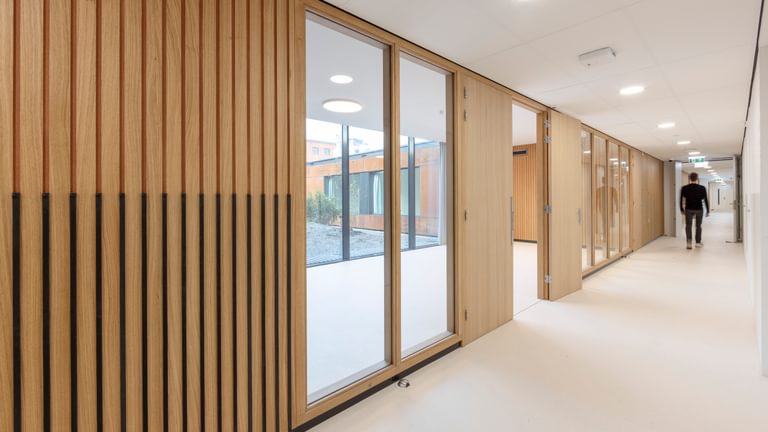
monitoring emissions
The care centre is constructed from circular building kits, designed by architecture firm cepezed. Architect and cepezed partner Ronald Schleurholts: 'Our expertise is lightweight construction with fewer raw materials. It has turned into a two-storey building consisting of concrete and wood: sturdy enough to prevent escapes. The concrete inner walls and floors were made in advance in a workshop and factory. Schleurholts: We worked with the entire building chain to create the design plan, from purchaser and installer to logistics consultant. Then what you run into is regulations. After all, how do you measure emission-free building?'
For Du Prie, that meant thinking in solutions. For instance, they hung cameras on the construction site that scanned the license plates of construction traffic to retrieve data from the engines. 'We used trucks with Euro 6 engines, the cleanest truck you can go on the road with nowadays,' says Du Prie. Combined with the vehicles' measured driven kilometres, nitrogen emissions were easy to monitor. Electric shuttle buses were used for limited nitrogen emissions from transporting staff and suppliers from Madurodam to the construction site.
However, only the nitrogen emissions at the building site were used to calculate the total nitrogen emissions of the construction project, not the transport to and from the building site. Du Prie: 'We are below the norm.'
complex
Du Prie: 'In the use of materials, we also had to take into account safety requirements, such as fire-resistant materials and escape prevention. In addition, different non-standard materials were occasionally used. As well as meeting the comfort needs of clients at the care centre. That makes it complex.' Schleurholts adds: 'And building while the penitentiary is in use also has a lot of impact on the construction process. As for low-nitrogen building, this is pioneering. Doing things differently from standard. It also offers opportunities. In this way, we continue to develop in circular and smarter building; that stimulates us.'
pioneering with the Rijksvastgoedbedrijf
cepezed's appeal to policymakers is: 'Give designers and builders room to come up with creative solutions.' In addition, the architecture firm urges the market to build with low nitrogen. 'Just do it. And accept that not everything will be perfect. The pioneering is something you do together with the Rijksvastgoedbedrijf. Take unforeseen things into account together and balance shared risks. Learning from each other.'
The temporary care facility is usable for about 15 years. Du Prie: 'What is appealing is that the building can also be functional elsewhere in the future, because it is circular.'
consortium dpcp
The consortium of Du Prie Bouw & Ontwikkeling and cepezedprojects has committed itself to the project on a risk basis and has final responsibility for the integral design, realisation and the first year of maintenance. cepezedprojects is responsible for the project and process management. To meet the very strict nitrogen requirements, DPCP has taken combined measures and cepezedprojects has directed the integral cooperation between design and execution. Besides the deployment of electrical equipment and strict logistical conditions, the design and construction methodology was also crucial; the temporary JCvSZ was designed and built with nitrogen reduction in mind. Consortium dpcp previously realised the Temporary Court in Amsterdam
This is an article by Rijksvastgoedbedrijf.
→ Read more about the project here
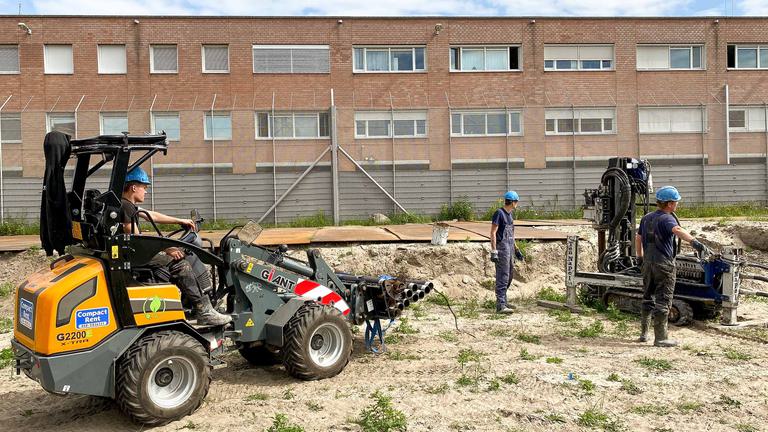
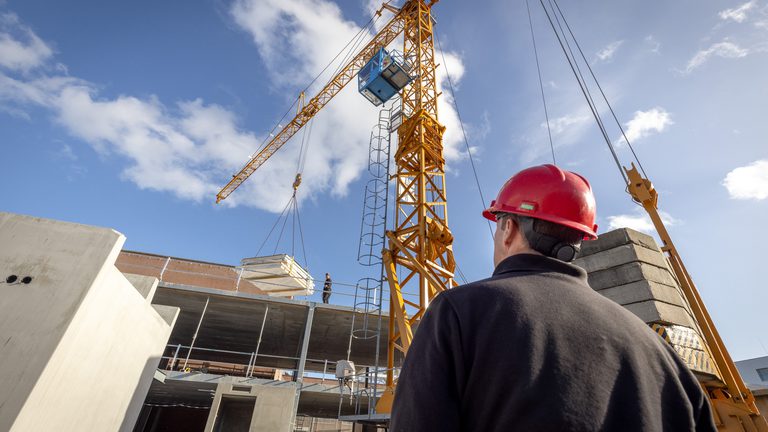
→ Mail bd@cepezed.nl or call our business development team on +31 (0)15 2150000